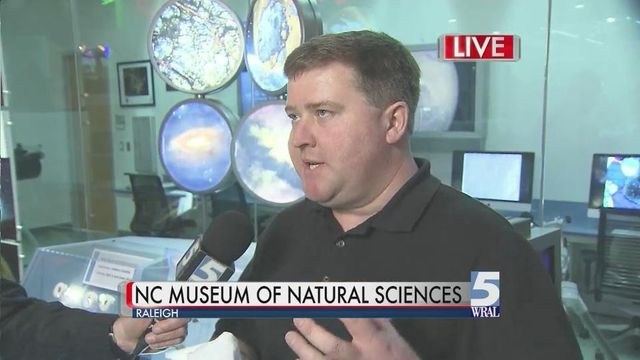Rare chance to view comet with naked eye
A new comet was discovered June 2011 and will be visible in North Carolina after sunset. Comet C/2011 L4 (PanSTARRS) came close to Earth earlier this week but was still over 100 million miles away - neither it nor other expected comets pose any threat to Earth.
Posted — UpdatedA new comet was discovered June 2011 with the Panoramic Survey Telescope and Rapid Response System on a mountaintop in Maui, Hawaii. Comet C/2011 L4 (PanSTARRS) came close to Earth earlier this week but was still over 100 million miles away - neither it nor other expected comets pose any threat to Earth.
Comet PanSTARRS has been visible in the southern hemisphere for most of February; however, the northern hemisphere will get a chance to see it in March. Recently, the comet was spotted low over the Pacific Ocean by observers in Baja California.
In North Carolina, the comet can be seen to the west, 30-45 minutes after sunset.
Spotting the comet this weekend and early next week will be challenging for anyone with a cluttered western horizon – the best opportunity will be middle to late next week as the comet rises higher above the horizon, hopefully above trees and buildings for most observers. March 13 looks particularly good because the comet will appear higher in the sky but below a thin crescent moon.
Binoculars or even a small telescope will help better see the comet- be careful to avoid looking at the sun, even though its setting.
The comet will visible for rest of the month but will grow more difficult to see as it speeds away from the inner solar system.
Comet PanSTARRS suggests the comet is on a path relatively close to the sun. The sun’s energy causes gases and dust to escape from within the comet creating a tail. The tail acts a bit like a wind sock and always points away from the sun, showing the direction of the sun’s energy streaming past the tail. As it draws closer to the sun, it is expected to get brighter as increased energy causes more gasses to escape.
In light polluted triangle skies we will probably only be able to spot the comet’s coma, which is a halo of escaping gas. The gas is much wider proportionally than the nucleus of the comet and much brighter than the dimmed tail. The nucleus of the comet is made up of water vapor (think of steam rising above a boiling pot), ammonia (think Windex), carbon dioxide (think dry ice) and dust (think top of the refrigerator), all trapped in a ball of dust and rock.
Comets excite planetary scientists because they are analogous to deep freezers preserving matter dating back to formation of the solar system. In 2006 the Stardust mission returned particles from Comet Wild 2 revealing a makeup far more complex than previously thought.
Scientists studying the returned samples discovered glycine, an amino acid used by living organisms to make proteins and a fundamental building block of life. This has led to theories that comet served as delivery vehicles for life’s ingredients.
Recent observations of the peanut shaped Comet 103P/Hartley 2 found water ice very similar in composition to water found on Earth – suggesting the comets as a source for Earth’s oceans.
Comet PanSTARRS likely originated in the oort cloud, knocked away from their home well beyond the orbit of Pluto, nearly a light year away. The Oort Cloud is believed to be made up of the billions of comets and even minor planets, all leftovers of the nebula which became our Solar System.
If Comet PanSTARRS isn’t as spectacular as hoped, we still have another good opportunity in what is turning out to be the year of the comet. Comet C/2012 S1 (ISON) is speeding through the solar system heading for a dive into the sun’s outer atmosphere on November 28, 2013. If the comet survives the journey and emerges on the other side, it could live up to the “comet of the century” name already give to it.
Comet ISON’s coma is anticipated to be as bright as the moon with a tail that could stretch from directly overhead down to the horizon (90°).
Words like “anticipated” and “could” used frequently when describing comets because they are at the mercy of the sun – a comet can break up as it approaches the sun. Although astronomers are confident in their predictions, questions concerning where the comet will be on a given date, how bright it will be and whether a it will remain intact are educated guesses at best.
Copyright 2024 by Capitol Broadcasting Company. All rights reserved. This material may not be published, broadcast, rewritten or redistributed.





